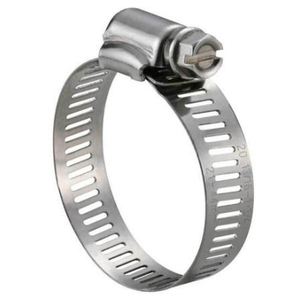- All
- Product Name
- Product Keyword
- Product Model
- Product Summary
- Product Description
- Multi Field Search
Hose clamp size refers to their clamping diameter range, which is listed as a minimum and maximum useable diameter. To determine the size needed, install the hose on the fitting or pipe (which expands the hose), measure the outside diameter of the hose, then select a clamp that accommodates that diameter in about the middle of its range.
Read More
The perforated hose clamp and non-perforated hose clamp are very common. The inner side of the non-perforated hose clamp band is smooth and has no hose on the band. The non-perforated hose clamps are suitable for clamping hoses made of flexible materials, for example, the rubber, providing a leakproof seal. The non-perforated hose clamps will not cut the hose or mar its surface. Even after a perfect installation, the connection may be subject to large shaking and pulling force between the rigid clamp and the hose due to mechanical vibrations or other external influences. Then, leaks may occur when the hose is cut by the hose clamp band.
Read More
Torque, the distance of force applied to a material to produce torsional deformation, in N-m, and lb-ft is the imperial unit of torque.Any mismatch or improper fastening may result in damage, failure or possible bodily harm to the product. Before installing any hardware, make sure all parts are in n
Read More

There are many types of hose clamps,different sizes, and the scope of application also touches all aspects. From small water pipes at home to large industrial pipes. At present, various grades of stainless steel clamps and clamps with different coatings have appeared in response to the rust, weathering and other problems that the clamps face. The price is also different due to the manufacturing cost, so for the stainless steel clamps used in different scenes, besides knowing which type of clamp should be used, do we also know how to choose the different stainless steel grades of each clamp? How to choose the most suitable clamp within a reasonable cost range?
Read More